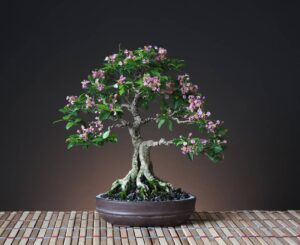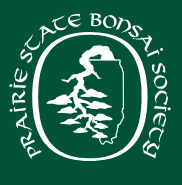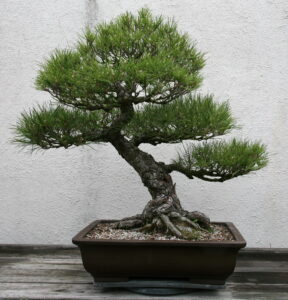
True Rough bark Japanese maples, Acer palmatum ‘Arakawa,’ must be asexually propagated by cuttings, air layering or grafting. These seedlings cannot the Rough bark Japanese maple cultivar because they are not asexually propagated. However, this parent Rough bark Japanese maple garden tree produces a high percentage of seedlings showing the beautiful rough bark characteristics, which will also develop on the surface roots. Many two and three year old seedlings show the beginnings of rough bark development.
Rough bark Japanese maples are commonly grown for bonsai from cuttings and air layers. Commercially they are quickly produced for the nursery trade by grafting. However grafted Rough bark Japanese maples do NOT exhibit the rough textured bark on the lower trunk and surface roots. Cutting or air layered trees show rough bark on the lower trunk and surface roots. A surface root from my garden tree about six feet away from the trunk has beautiful rough bark.
The Rough bark Japanese maple is a delightful cultivar to grow and train. Easy to grow without many problems they can be trained into beautiful bonsai in several years. They do not tend to produce new adventitious new buds on the trunk and branches with the rough bark. Desired new branches must be grafted, usually using the inarch technique to add branches in needed area
Arakawa is also known as the “rough bark maple” because it has a unique corky bark. The rough bark will begin to show up anywhere after 3-5 years of growth and becomes quite prominent as the maple ages. These trees are popular amongst bonsai lovers for their unique bark which develops even when dwarfed. In Japanese, “ara” means “rough” and “kawa” means “bark”. This variety, while known for it’s bark also has fantastic fall color with leaves turning bright orange and red.
If planted in the landscape, Arakawa will grow to 18-20 feet by 12-15 feet wide . Sun with part shade is best. Hardy to -20 degrees. Suited for zones 5-9.



